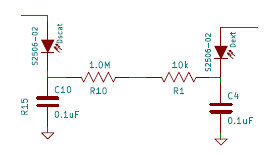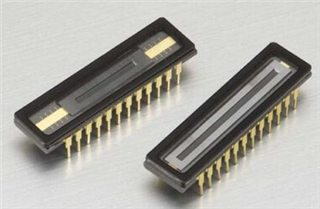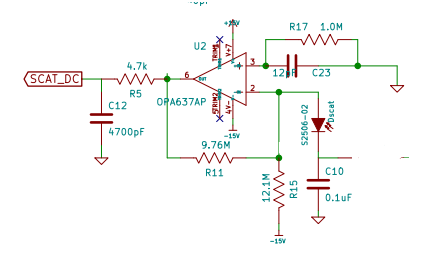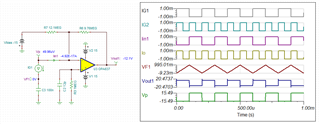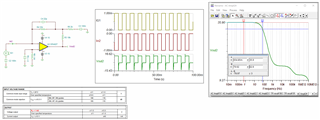Other Parts Discussed in Thread: OPA627
Attached below is the actual board design wth OPA637 with photodiodes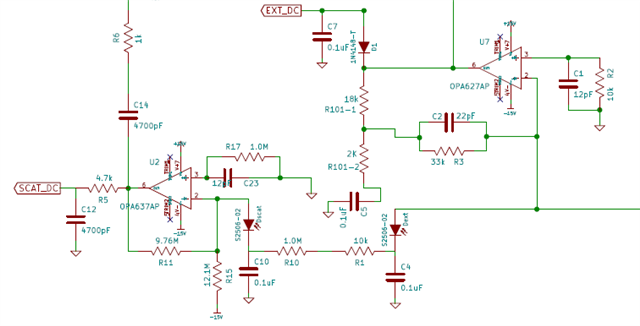
For testing purpose, I have removed photodiode from the practical circuit. I have taken jumper wires from the solder pads to feed input current from precision power source. Attached below is the simulation circuit and same goes for practical connections.
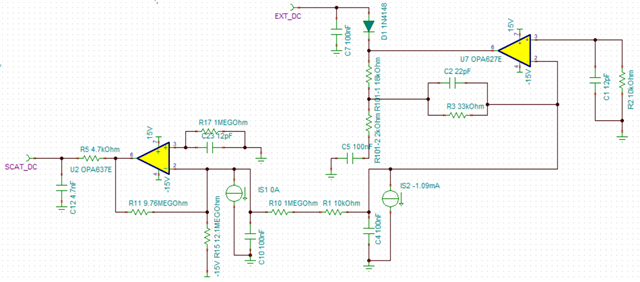
The input current fed is IS1=0A, IS2= -0.99mA to -1.60mA. Voltages observed for these corresponding input current values varies from -13.5V to 0.109V in practical.
Whereas in simulation, I am getting voltage around -13.1V in these range. Attached image for reference.
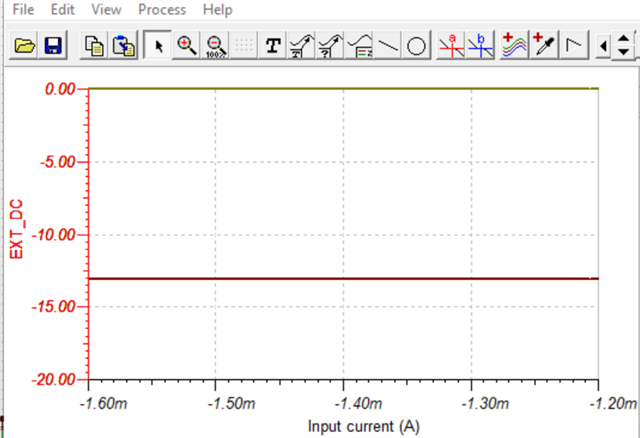
Kindly help on this.





